Set Review ➟ LEGO® 10283 NASA Space Shuttle
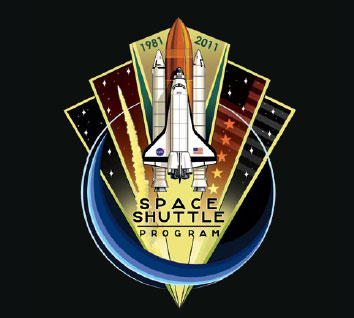
2021 marked the 40th anniversary of NASA’s space shuttle missions. Coinciding with this anniversary, LEGO has launched one of its most ambitious sets dedicated to NASA.
This review takes a look at Discovery, the space shuttle that launched the Hubble Space Telescope into orbit in April 1990 during NASA’s STS-31 mission.
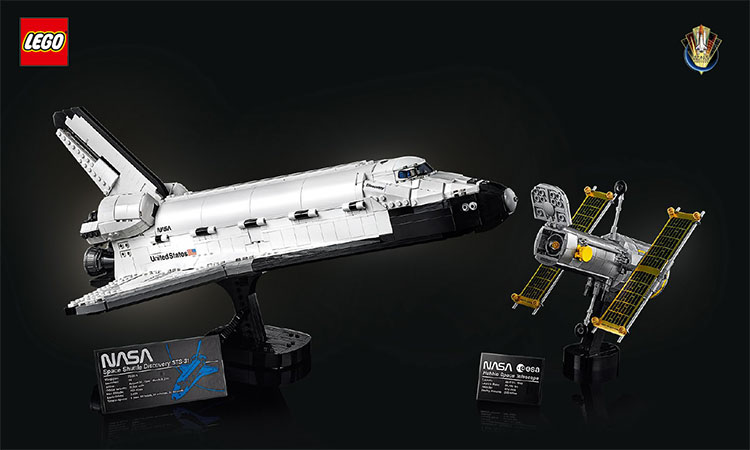
To start, the size of the box is impressive, and the set contains 2,354 pieces, distributed in 18 bags, and a magnificent construction manual.
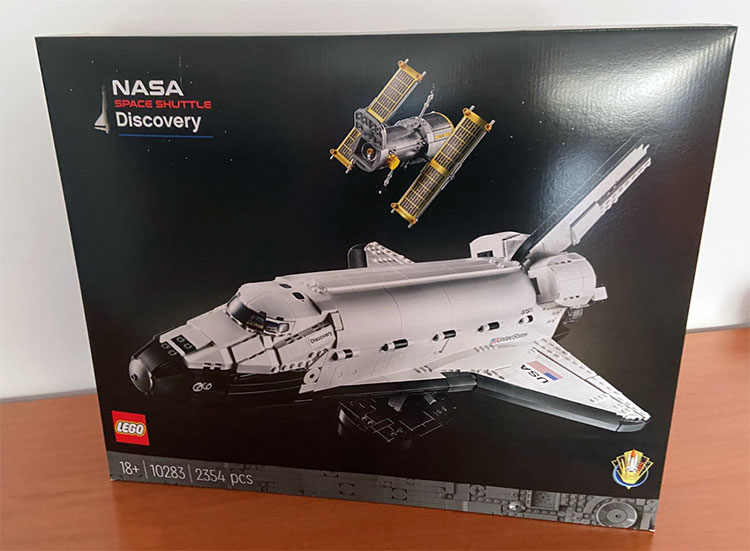
As usual with this type of set, the manual includes the story of the mission and real images of the elements that are then recreated in LEGO format.
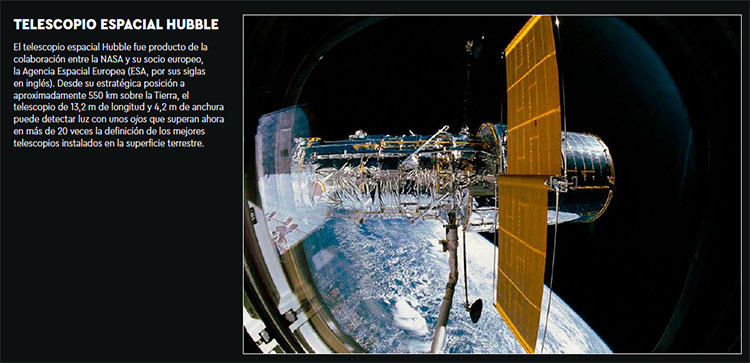
First we will build the Hubble telescope with a stand and a descriptive plaque. This plaque consists of a plate supported by slopes on which you put a sticker.

It is worth noting the large number of silver-plated pieces, and up to 108 pieces with a pad print with the logos of NASA (National Aeronautics and Space Administration) and ESA (European Space Agency).
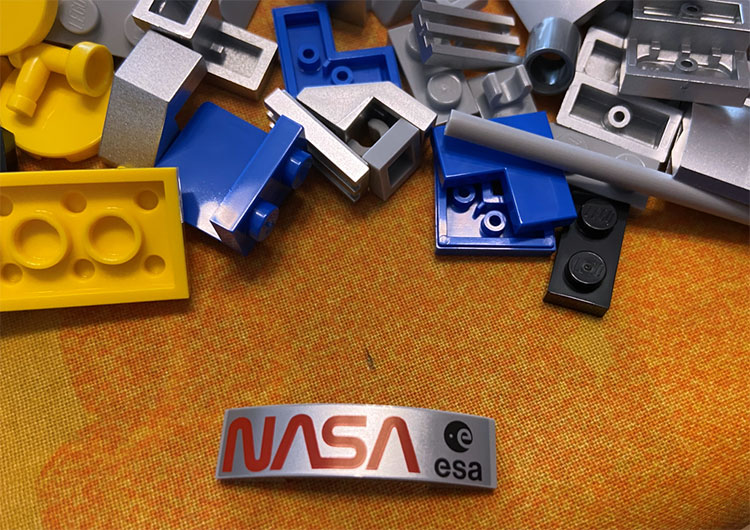
I was struck by the choice of colour for the interior pieces; in addition to the traditional red, yellow and blue, we have some olive green bricks.
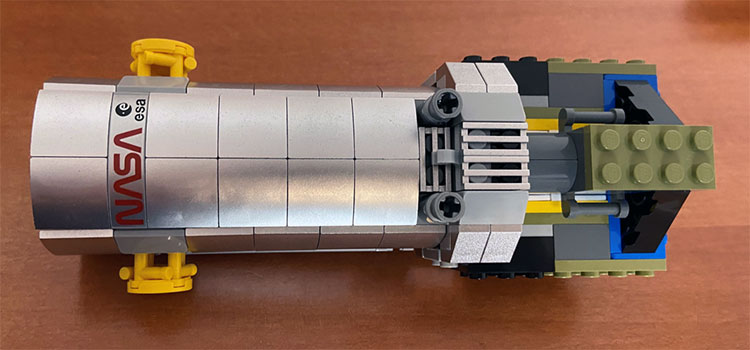
Also noteworthy are the two solar panels made of gold coloured plastic.
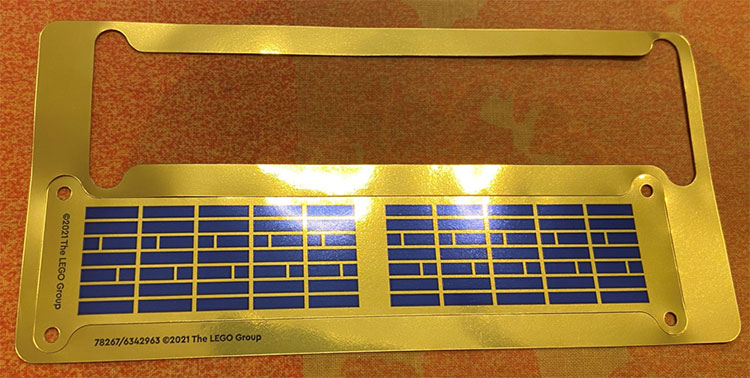
The Hubble assembly shows the two solar panels unfolded and at the end of the set we can see the folded version inside the shuttle compartment.
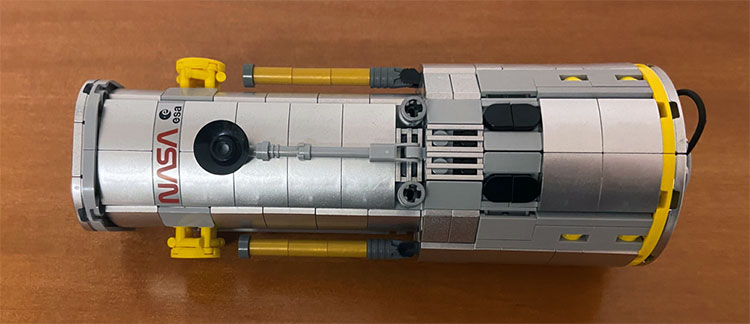
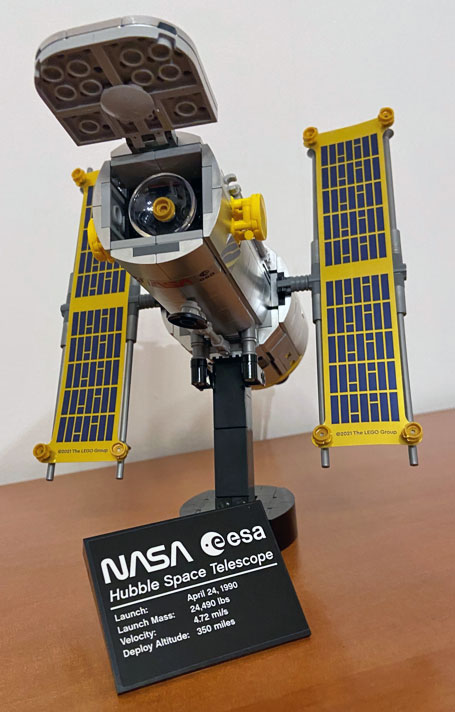
Next we start the assembly of the shuttle. As in the case of the telescope, we first assemble the support and its descriptive plaque. On this occasion we use two rack and pinion bricks (Gear Rack 1 x 7 with Axle and Pin Holes) to build the support.

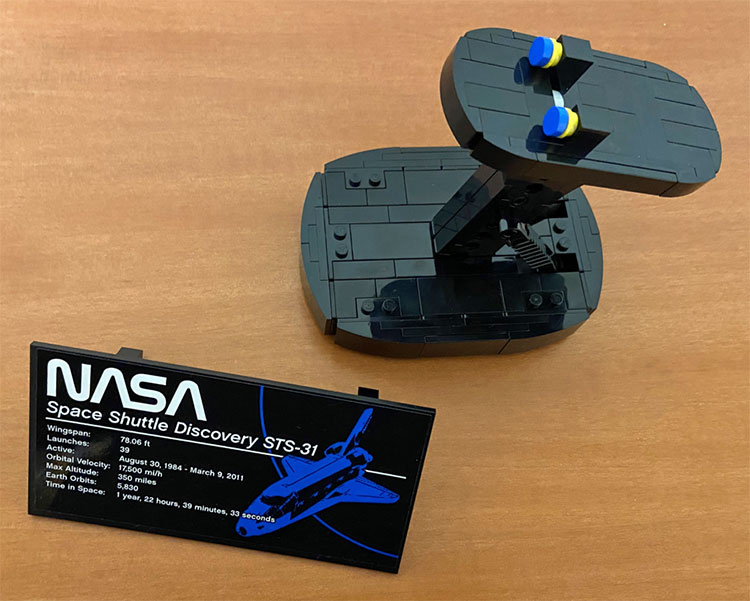
The shuttle is built from the rear towards the front, laying out the floor plan. Another highlight is the wheel bearing brick (2x6x1 wheel bearing) used at the front of the shuttle.
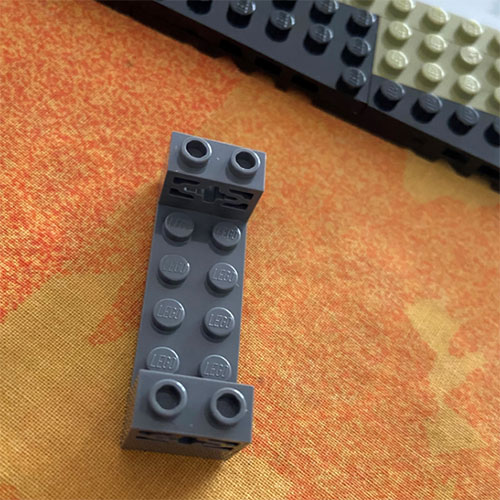
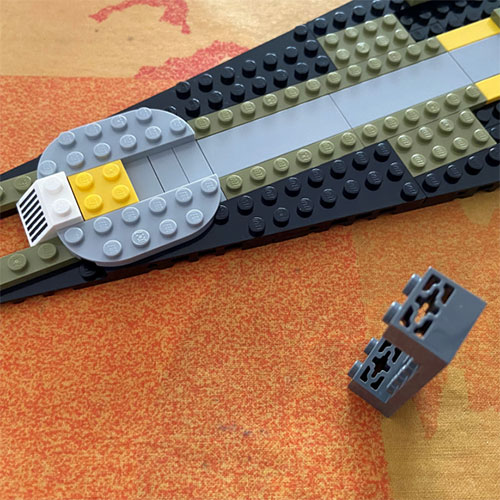
We also use two hearts; two 3x3 plates to join two sections in a curve. This is an eye-catching detail.
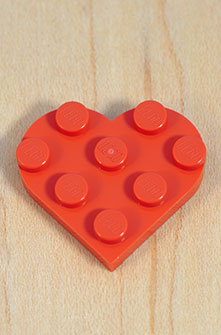
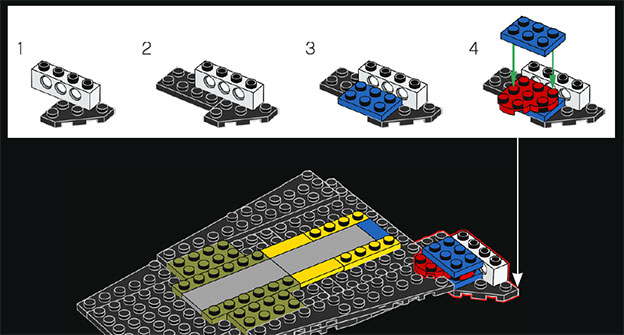
It’s amazing to see how LEGO makes sure not to leave any gaps between two parts, using a triangular brick in reverse. It is really ingenious and from below it looks really good with a very smooth finish.
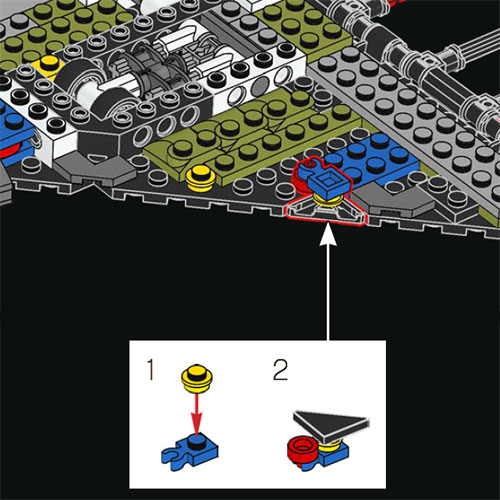
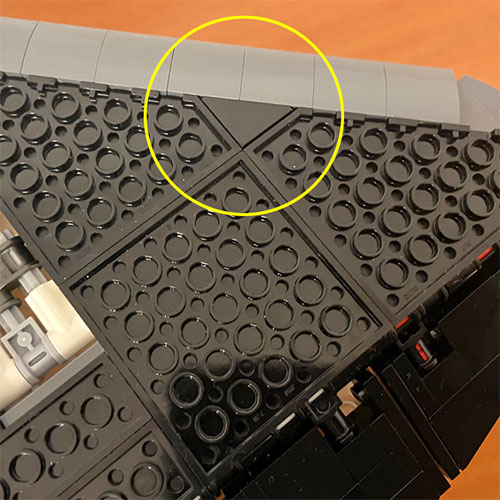
It is very gratifying to see the assembly of the shuttle and how Technic parts are combined to create the landing gear system by means of shock absorbers (Shock Absorber 6.5L) and a lever movement by which it is activated.
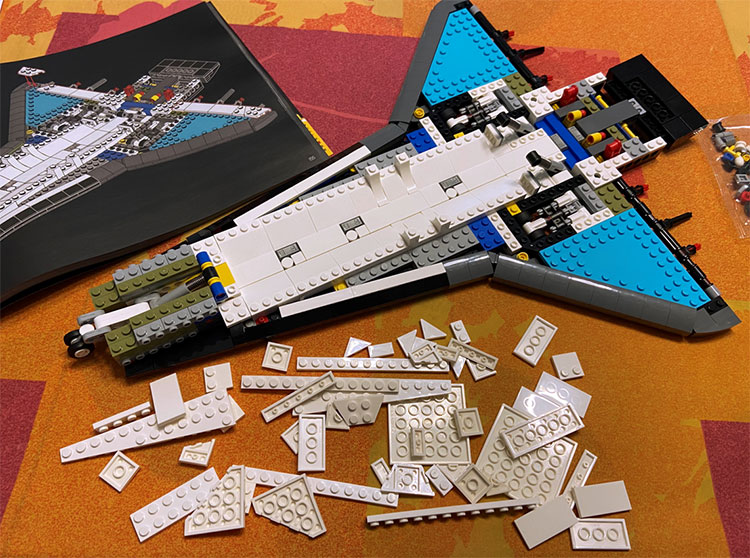
The pieces dedicated to NASA and the American flag are screen-printed.
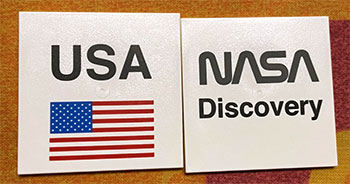
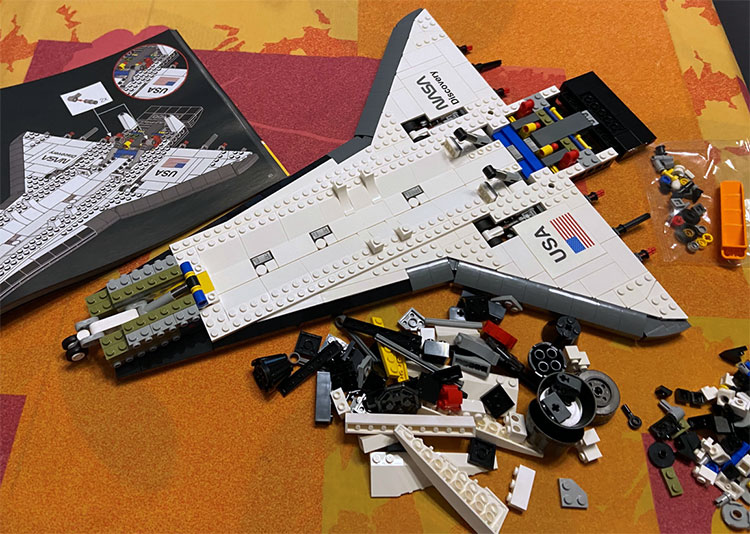
The cargo hold consists of curved panels with silver stickers on the inside. It contains the space arm for deploying the satellite and we can see the four video cameras placed at the ends of the cargo hold as well as on the articulated arm itself.
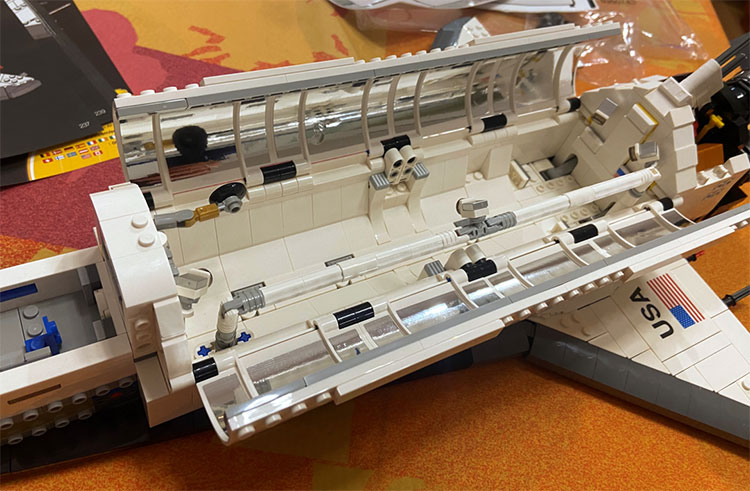
As a curiosity included in the manual, we know that there is a rule that the stars on the US flag must always be oriented forward, as if the flag were moving against the wind. This is why the flag on the starboard side of Discovery’s fuselage flies backwards, as we will see once the shuttle is assembled.
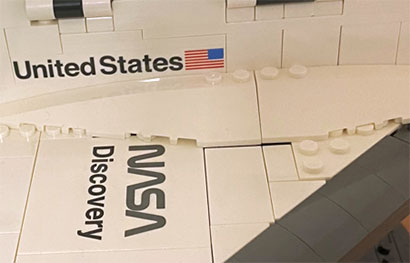
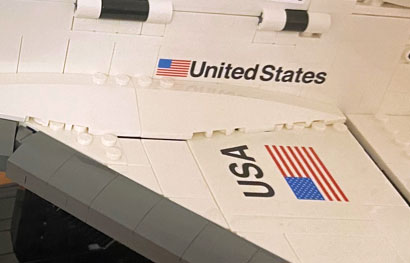
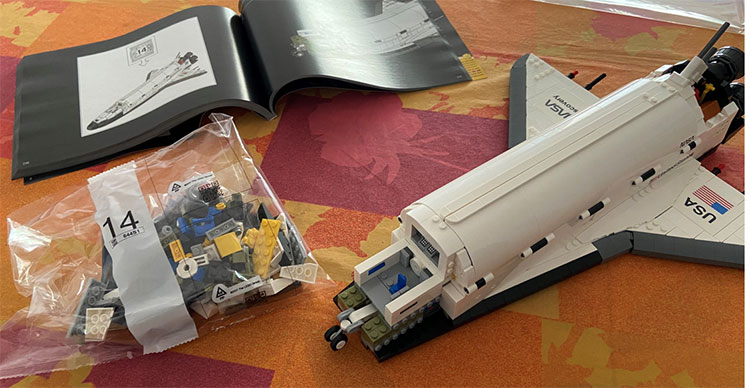
The nose and cockpit are assembled at the end and give it the appearance of an aircraft for going to space and back. The flight deck contains four seats for the commander, pilot and two mission specialists. The middle deck has a seat for the mission specialist. So up to five people can travel on Discovery, which has carried up to 222 people during its 27 years of service since 1983.

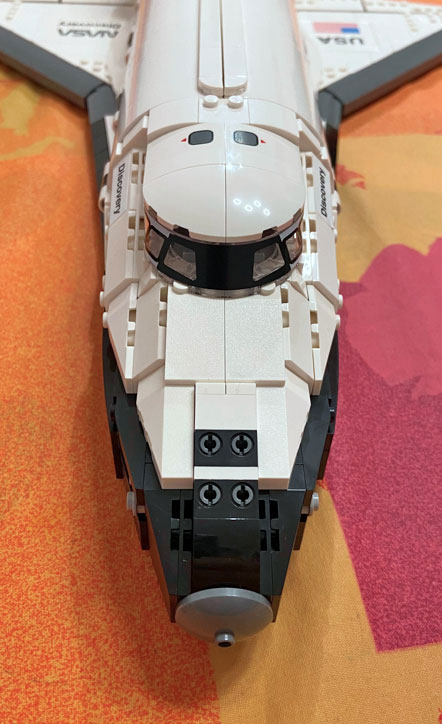
To complete the shuttle, we built the Orbital Manoeuvring System and the Reaction Control System, which are the propulsion engines and rockets that control the orbiter’s movements while it is in space.
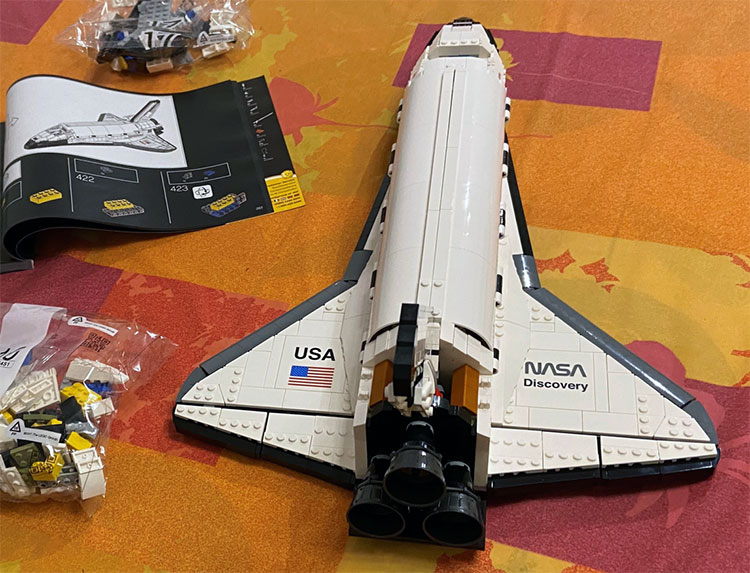
The flaps move in a cross motion when the upper nozzle of the three engines is rotated.
During the landing manoeuvre, the rudder of the orbiter splits in two and also serves as an aerodynamic brake.

Pushing the flap under the engines deploys the undercarriage.

The whole assembly can be joined together by means of an adaptor which supports the telescope inside the hold. Two pairs of studs are fitted in the hold to support the telescope.
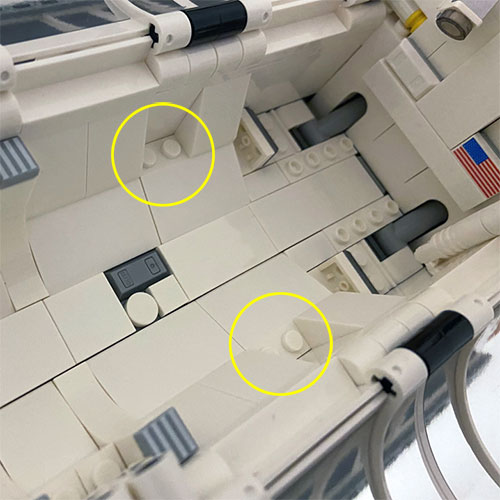

On the telescope without the panels, the onboard computer is removed to provide a gap to fit the top part of the support.
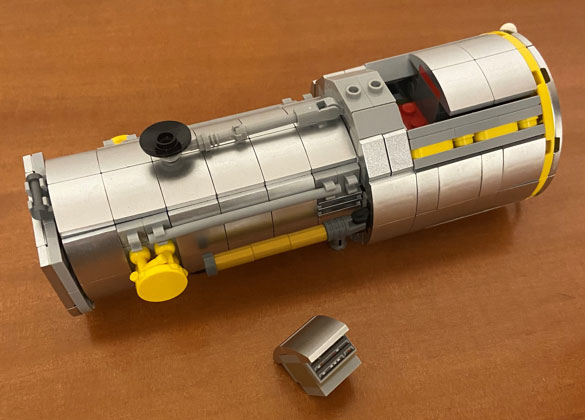
And the robotic arm is attached to the telescope, recreating the Hubble deployment manoeuvre.
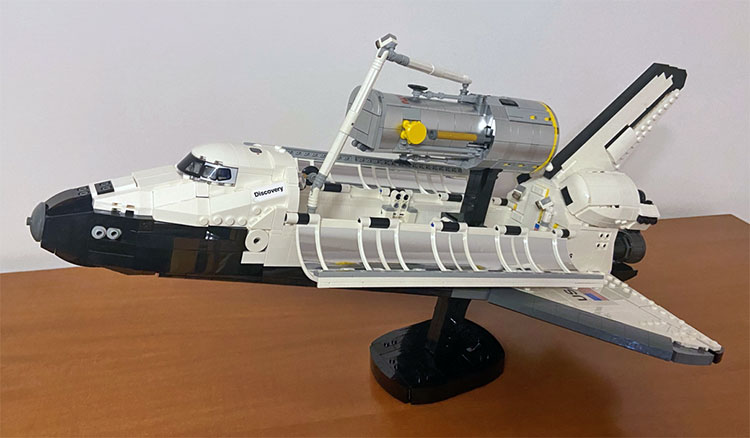
The experience of assembling the shuttle Discovery is extraordinary. You can go through scenes from documentaries and films with this set. This shuttle is recreated in great detail, from the fuselage to the interior with the space arm in the cargo hold.
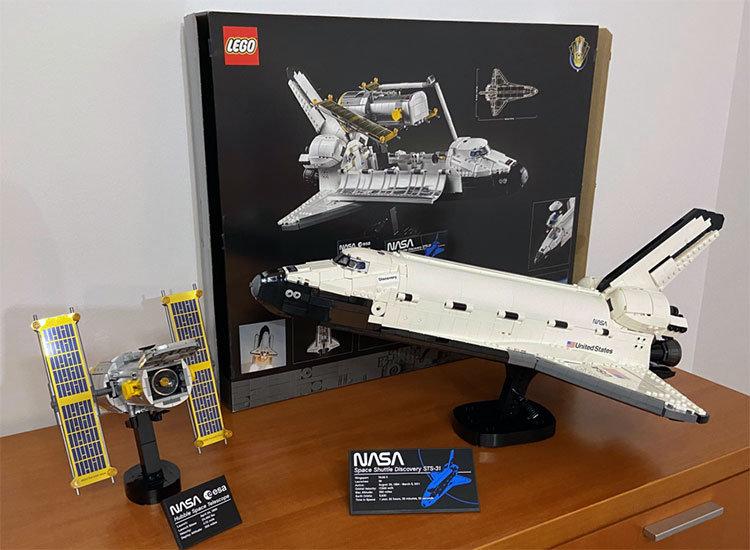
In conclusion, the Space Shuttle and Hubble join Apollo XI, Saturn V and the International Space Station to complete your LEGO collection dedicated to NASA and ESA.
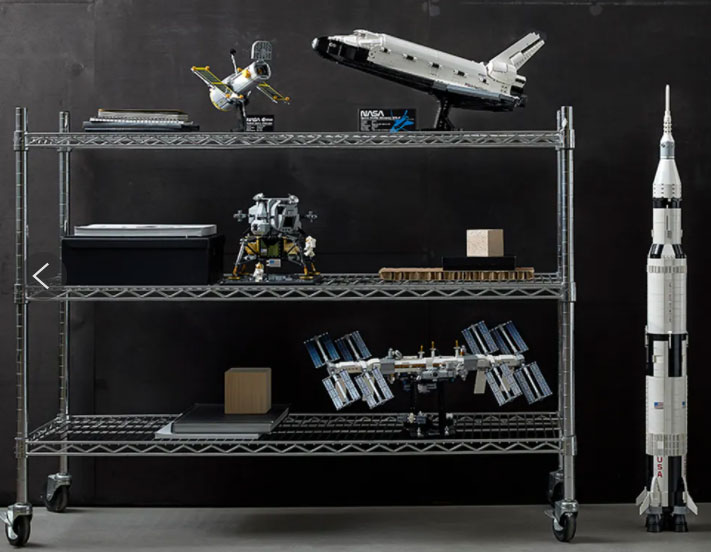
The opinions expressed in this review are ours alone and LEGO neither endorses nor supports them in any way.
33501